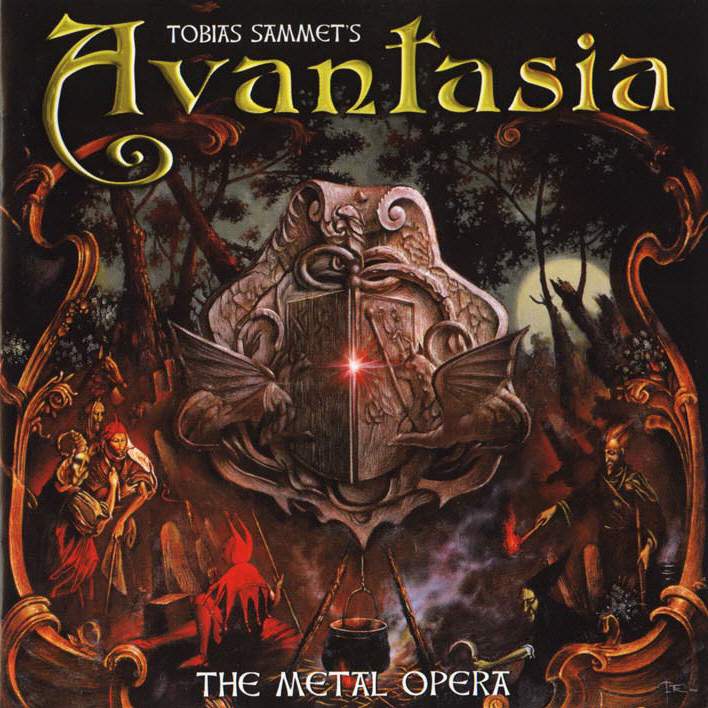Symphonic Metal
Symphonic Metal greatly confounds people, the concept itself. Typically, people associate metal music with a wholly discordant sound with guttural voices. The orderly structure of this music vanishes entirely or at least they believe so. But the real question these individuals need to ponder is, " why should art abide by preformed structure?" Doesn't the structure of art come from the minds of individuals with a creative bent. In their minds, the disorderly fashion of the music has a structure of being disorderly. By being disorderly, it's offering an insight into the workings of society or the human psyche. All this extrapolation though is spoken in the language of music, an unspoken expression of the inexpressible. Through the minds of diversified listeners, the meaning can be altered, according to their difference in beliefs or ideals.
The word "symphonic," exudes a feeling of lavish Mozart compositions and lustrous environments. Normally the aforementioned metal fans cower in fear because this music relies entirely on an ordered, mathematical system of music creation. Even worse, the stereotyped listeners of this genre are normally affluent members of society or openly pretentious people. Truthfully, the very concept of musical creation derives itself from the workings of classical music. Consciously or unconsciously, musicians use the techniques of classical music creation when creating supposed works of "chaos." Basically, even chaotic music has some semblance of structure or order. Because any human creation has some base layout to construct upon. Though the following levels may be unwieldy or contain a lesser amount of the initial layer of pure order.
Enough philosophy, if anything the philosophical content proves that all works of art even the loud metal music must be taken seriously. Back on topic, symphonic metal's unique styling offers a clearer picture of the true complexity and richness of metal music. Beethoven and Mozart, upon hearing symphonic metal music would be speechless because so much of the genre's contribution involves the same technique and system of creation as these two composers.
Epica,for example, appears on the surface to be largely unstructured and uninspired. Careful detail would unwrap these assumptions and show them for their falsity. Underneath the surface of chaos, lies a ordered and ingenious mathematical structure. Mark Jansen, the genius behind Epica's music, deceives most listeners by making them believe the music is mostly moronic drivel. Some could go further and say that the use of gutturals are placed there in order to conform to the expectations of metalheads. Close scrutiny reveal a deeper layer or a battle waged between order or chaos. Simone Simmon's ethereal voice struggles to overdominate the chaotic guttural voice of Mark Jansen. Sometimes Mark Jansen triumphs until the music segues back to Simone Simmons who contradicts the chaos and provides the listeners with a semblance of order.
Symphonic Metal, the name itself, proves to be a contradiction based on surface level analysis of these respective genres. Remember classical means "order," for most, and metal music provides listeners with the sensation of uncontrollable, unwieldy chaos. Therefore Epica's use of soprano singing and guttural screeches are intentional on the part of the creators of the music. In some ways, they are subliminally informing people of their misconceptions of these genres. If one were to listen and recognize the various layers involved in this music, they would recognize that both genres respectively have the opportunity to be completely ordered or chaotic. Of course, this depends entirely on the mood that the music strives to create. Normally, this mood, as with the workings of music are hard to pinpoint.
Weirdly, symphonic metal serves a role to pay homage to the rich knowledge of preceding civilizations. The symphonic sound works to preserve the archaic while also combining contemporary, innovative sounds. Gregorian Chants are normally used in order to remind music listeners of their effectiveness of driving powerful emotions through a song. Instead of a weakened emotion, middling through the music, the Gregorian Chants bolsters a certain emotion and makes it more pronounced.
Various symphonic metal bands engineer their own unique stylization of the genre's most recognized sound. Kamelot, for example, combines the atypical sounds of power metal and symphonic metal then permit Roy Khan voice to fuse them together expertly. Speaking of Roy Khan, an important component of symphonic metal happens to powerful vocalists. Most bands incorporate vocalists with rich operatics to bridge two seemingly divergent sounds. Either it be a mix of symphonic, metal, power metal, Arabic, or other unqiue sounds, the strong vocalists augments the power of the sound and finalizes it.
Roy Khan stands as the most skilled vocalist of the many symphonic metal vocalists out there. Expectantly, the vocalist reputation remains low due to his genre of choice. Again, people's confusion over the implications of the genre's name creates a trepidation from the safehold of safe sound. No one really wishes to deviate themselves from the normalcy of safe music techniques. Because the genre has a low reputation and much hate among many metal or classical elitists, tactful musicians are greatly underappreciated. In my personal opinion, Roy Khan can sing far better than many rock vocalists but because his voice involves operatics. People overlook his vocal skills and instead looks for someone who half heatedly sings a very generic rock song.
After reading this article, if you're interested in seeking out more substantial information about this unconventional genre. Please check out the listed bands below whom I find to be very skilled in their interpretations of this sound. Feel free to comment any critiques or other pertinent comments!!
Reccomended Symphonic Metal Bands:
Xystus
Kamelot
Nightwish
Within Temptation
Delain
Epica
Stream of Passion
Leaves' Eye
Apocalyptica
Sonata Artica
Avantasia
Symphony X
X Japan
Recommended Video Links
Off Planet Author Interview & Give Away!
-
I always enjoy doing my Take 10 Q&As with various authors. This time, I'm
really excited for you to get to know Aileen Erin! She was one of the
students...
6 years ago












No comments:
Post a Comment